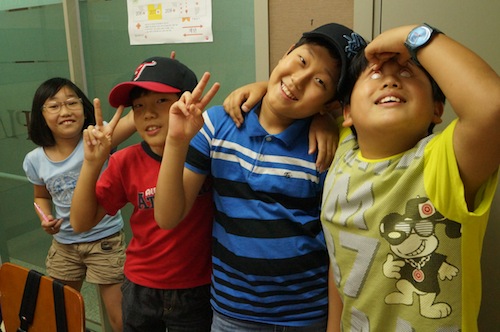ESL Classroom Management Strategies

Because classroom management is such a complicated balancing act between being fun and nice, and being strict enough to give kids the structure they need, many teachers find that it’s one of the hardest aspects of teaching to master.

Start off on the right foot
First impressions matter. Right from the beginning of class, have a set of rules, as well as clear and consistent consequences for breaking them. It’s better to be a little on the strict side at first and to get the class started off with a clear structure and good discipline.
Even if you are already half way through a class, you can still reestablish the rules; you just have to be prepared for some resistance from the students until they realize that you are serious about enforcing discipline and consequences.
Establish relationships and trust
One of the reasons that being a substitute teacher is so difficult is because the sub and the students don’t know each other at all. There is little sense of trust, no sense of where the lines are, and no personal relationship.
As their regular teacher, on the other hand, you have the chance to get to know your students as individuals, to encourage their interests and passions, and to build a classroom environment that allows them to feel safe and to learn.
The easiest way to do this is to simply show an interest in the students lives. Ask questions about their interests, be patient and empathetic when they are struggling in class, and look for ways that you can connect and relate to them.
Use seating arrangements to your advantage
At first, your seating arrangements will be pretty much random since you don’t know the students at all. Once you have gotten to know them, though, switch their seats so that you separate students who are likely to talk to one another or are likely to fight, or have students with behavioral problems surrounded by peers who are likely to help calm them down.
Assign roles and responsibilities to students
Kids love being given responsibility. Have classroom roles that rotate every week or month. Scorekeeper, passing out books, timekeeper, team leaders, etc. This help the class to run more smoothly and give the students more control and responsibility.
It also takes a lot of little tasks off of you and allows you to focus more on the bigger picture. Plus, it gives you a great tool for classroom management – you’ll be amazed at how excited students get about the privilege and responsibility of certain roles, and how quickly bad behavior will turn around when you threaten to take that away for a class or for a whole week.
Make use of classroom space
Get creative with how you use the space you have in the classroom. Create different areas for different subjects, or have the students rearrange their desks into tables for group activities.
For example, have a reading nook where students can go if they finish an activity or worksheet before their classmates, or an open space in the back that they can use for games if they complete certain tasks in time.
Having just that little bit of variety in the classroom, and having the freedom to get up and move to the reading corner or get a new worksheet when they finish early, can keep students engaged and have a huge impact on their behavior.
Divide the class into teams
This can be tricky, but if you do it right, it is a great motivational tool. Split the class into two teams and use a points system to keep track of which one is ahead. At the end of each class or each week, give the winning team some kind of reward – for example, they are the first to get ready to go home.
Make sure that the teams are balanced and that you are able to keep the points distributed pretty evenly. You want to use points to encourage good behavior, so it’s better to focus on rewarding points for positive things, rather than taking them away.
If you do take points away, avoid doing it as the result of just one team member’s behavior, or you risk alienating them from the class.
Use group/partner work
Splitting the class up into groups has a lot of benefits. Groups and pairs can work independently on projects while you walk around and give more individual attention to students.
Students who are quieter and don’t feel comfortable speaking up or reading in front of the whole classroom are a lot more likely to speak up to just one or two of their peers. You can also choose exactly how to divide everyone up into pairs or groups, and can make sure that you pair struggling students with peers who can help them.
Don’t be afraid to play around with new ideas to see if something seems to catch on and work particularly well. ESL classroom management is all about figuring out what works for each class and for you as a teacher.



